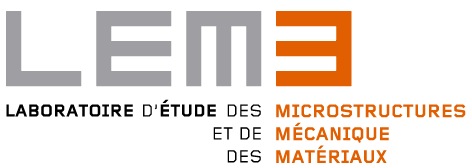- 1st floor meeting room, LEM3 – site Metz Technopôle, 7 rue Félix Savart, 57070 Metz
Abstract
Recent advances in scanning technologies and digital twinning have enabled the high-fidelity capture of geometric details in composite microstructures. In this talk, I will present state-of-the-art spectral methods for analyzing the morphology of complex 2D and 3D microstructures. I will highlight how these techniques are used to generate statistically similar surfaces and introduce my recent work on the morphology-preserving remeshing of such structures. I will then discuss the application of these methods in numerical simulations, focusing on the micromechanics of stone masonry microstructures derived from remeshed digital twins. Preliminary results on using spectral parameterization to reduce the dimensionality in the topological design of 4D-printed soft shells will also be presented. Lastly, I will discuss the envisioned applications of high-fidelity spectral solutions to solve high-order partial differential equations (PDEs), such as the Föppl-von Karman problem, and their impact on understanding the underlying physics of shape-shifting problems.
About the speaker
Mahmoud Shaqfa received his PhD in 2022 from the École Polytechnique Fédérale de Lausanne (EPFL), where he worked with Prof. Katrin Beyer at the Earthquake Engineering and Structural Dynamics (EESD) Laboratory. His doctoral research focused on studying the geometry and micromechanics of stone masonry microstructures. In 2023, Mahmoud was funded by the Swiss National Science Foundation (SNSF) to join the van Rees Lab at the Massachusetts Institute of Technology (MIT), where he worked on linking his morphological approaches to the design of shape-shifting 4D-printable soft tissues. Most recently, Mahmoud joined the Croatian Centre for Earthquake Engineering to collaborate with Prof. Josip Atalić on a project investigating the mechanical behavior of masonry structures in the city of Zagreb.
To attend on teams
It is also possible to attend the seminar on Microsoft Teams.





